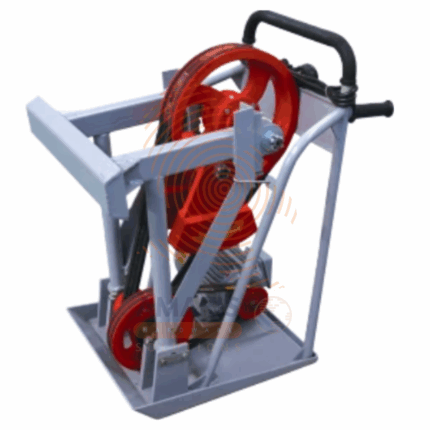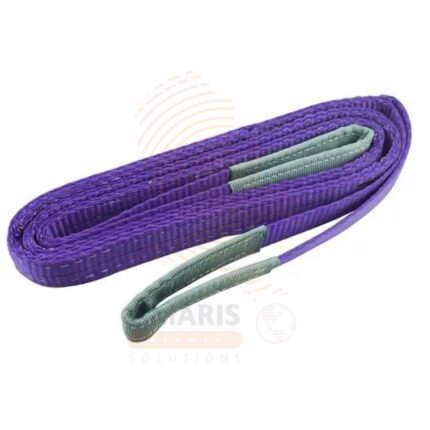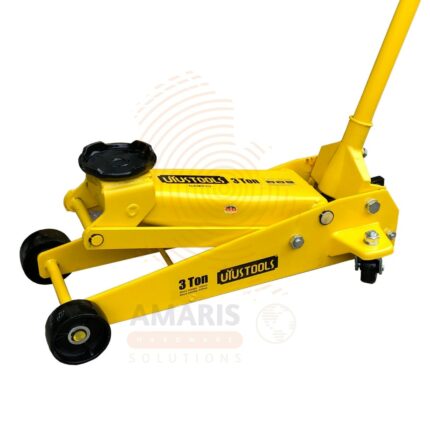Fork lift
WhatsApp Order
A forklift is a powered industrial truck used to lift, carry, and transport heavy materials over short distances, commonly used in warehouses, construction sites, manufacturing facilities, and loading docks. Equipped with two forks or prongs at the front, forklifts are designed to insert under pallets or heavy items and lift them using a hydraulic system. They come in various types, including counterbalance forklifts, reach trucks, pallet jacks, and rough terrain forklifts, each tailored to specific environments and tasks. Forklifts are essential for efficient material handling, reducing manual labor, improving safety, and streamlining operations in logistics and industrial settings.
Description
Uses
- Warehouse Material Handling
o Transports pallets, boxes, and inventory within warehouses and distribution centers.
o Speeds up order picking, loading, and unloading processes. - Construction Site Operations
o Moves heavy construction materials such as bricks, cement bags, steel beams, and pallets of supplies.
o Handles materials over uneven terrain using rough terrain forklifts. - Loading and Unloading Trucks
o Lifts and places heavy items onto or off trucks and trailers efficiently.
o Reduces loading time and improves safety compared to manual lifting. - Shipping and Receiving Areas
o Organizes goods in staging areas, docks, and container yards for import/export.
o Facilitates inventory movement between different points of entry or dispatch. - Manufacturing and Production Lines
o Transports raw materials, parts, or finished goods between workstations and storage.
o Keeps production lines running smoothly by ensuring material availability. - Recycling and Waste Management
o Moves bulk containers, bales, or waste bins in recycling centers or industrial plants.
o Supports waste segregation and transportation for processing. - Inventory Management
o Assists in stacking goods on high racks or shelves using reach forklifts.
o Reduces damage to goods and improves stock rotation efficiency. - Event and Exhibition Setup
o Lifts and places heavy booths, stages, and equipment during event setup and teardown.
o Ensures safe and quick deployment of infrastructure. - Agricultural Applications
o Transports feed, fertilizer, or produce on farms using rough-terrain forklifts.
o Useful in moving heavy equipment, machinery parts, or crates.
SAFETY HANDLING PRECAUTIONS
Safety Precautions
- Operator Certification and Training
o Only trained and certified personnel should operate a forklift.
o Operators must be familiar with the specific model and environment. - Pre-Operational Inspection
o Check tires, brakes, lights, horn, steering, forks, and hydraulics before each use.
o Report and address any malfunctions immediately. - Load Capacity Awareness
o Never exceed the rated load capacity of the forklift.
o Ensure the load is evenly distributed and secure before lifting. - Proper Load Handling
o Insert forks fully under the load and tilt slightly backward for stability.
o Keep the load low while moving to maintain a low center of gravity. - Safe Driving Practices
o Always wear a seatbelt when operating the forklift.
o Drive at safe speeds, especially when turning or reversing.
o Sound the horn at intersections or blind spots.
o Maintain clear visibility — use a spotter if the load obstructs your view. - Worksite Awareness
o Operate only in designated forklift zones and stay alert for pedestrians.
o Use warning lights and alarms in high-traffic areas.
o Avoid rough terrain unless using a model designed for it. - Avoiding Tip-Overs
o Never raise or lower loads while the forklift is in motion.
o Avoid sharp turns and sudden movements, especially with elevated loads.
o Do not use forklift to lift people unless using an approved platform. - Parking Safety
o Lower forks to the ground, engage the parking brake, and turn off the engine when not in use.
o Do not park on inclines or obstruct walkways. - Maintenance and Repair
o Perform routine maintenance as per manufacturer guidelines.
o Use only authorized personnel for repairs and parts replacement.
o Check hydraulic fluid, fuel levels, and battery charge regularly.
Related products
Flat Webbing Slings
A flat webbing sling is a flexible and durable lifting or towing device made from a flat strip of synthetic material, typically polyester, nylon, or polypropylene. These slings are designed for various material handling applications, such as lifting and securing loads in construction, manufacturing, and transportation industries. The flat design allows for a wide surface area, distributing the load evenly and reducing the risk of damage to the load. Flat webbing slings often feature reinforced loops at each end for attachment to lifting equipment, providing a versatile and reliable solution for lifting and moving heavy objects.
Floor Jack
PRODUCT DESCRIPTION
A floor jack is a mechanical device used to lift heavy vehicles, such as cars or trucks, off the ground to facilitate maintenance or repairs. It typically consists of a horizontal hydraulic cylinder, a handle for pumping, and a lifting pad that comes into contact with the vehicle's underside. By pumping the handle, hydraulic pressure is generated, causing the lifting pad to rise and lift the vehicle, providing a convenient and efficient way to access the undercarriage for various automotive tasks. Floor jacks are commonly found in automotive repair shops, garages, and for personal use by car enthusiasts.
Floor Jack 3T
A Floor Jack 3T (3-ton) is a heavy-duty hydraulic lifting tool designed to raise vehicles or other heavy objects up to 3 tons (6,000 lbs) off the ground for maintenance, inspection, or repair. It uses a hydraulic cylinder and lever mechanism to provide quick and efficient lifting with minimal physical effort. The low-profile design allows it to fit under most vehicles, including cars, SUVs, and light trucks. Widely used in automotive workshops, garages, and roadside assistance, the Floor Jack 3T ensures safe and stable lifting when used with appropriate support stands.
Hay Baler
A Hay Baler is an agricultural machine designed to compress cut and raked crops such as hay, straw, or silage into compact bales that are easy to handle, transport, and store. Hay balers come in various types, including round balers, square balers, and large rectangular balers, each producing bales of different shapes and sizes to suit specific storage and feeding needs. The baling process preserves the nutritional quality of forage and helps farmers efficiently manage fodder for livestock. Hay balers are essential equipment in modern farming, improving productivity and reducing labor.
Road Roller
A Road Roller is a heavy-duty compaction machine used in construction to compress soil, asphalt, gravel, and other materials to improve surface stability and load-bearing capacity. It uses large cylindrical drums—sometimes vibratory or pneumatic—to eliminate air gaps and provide a smooth, dense surface. Road rollers are essential in road building, foundations, embankments, and landfills for long-lasting structural integrity.
Road Roller
A Road Roller is a heavy-duty compaction machine used in construction to compress soil, asphalt, gravel, and other materials to improve surface stability and load-bearing capacity. It uses large cylindrical drums—sometimes vibratory or pneumatic—to eliminate air gaps and provide a smooth, dense surface. Road rollers are essential in road building, foundations, embankments, and landfills for long-lasting structural integrity.
Tractor
A tractor is a powerful motorized vehicle designed primarily for pulling or pushing agricultural machinery or trailers. It is a cornerstone of modern farming and land management, offering versatile performance in plowing, tilling, planting, harvesting, and hauling operations. Tractors are equipped with high-torque engines, large rear wheels or tracks, and a variety of attachment points, allowing them to operate over rough terrain and handle a wide range of tasks. They are also used in construction, landscaping, and material transport due to their durability and adaptability.
Winch
A winch is a mechanical device used to pull in, let out, or adjust the tension of a rope, cable, or chain. It consists of a spool (or drum) operated manually or powered by electricity, hydraulics, or a combustion engine. Winches are commonly used in construction, vehicle recovery, marine applications, off-road towing, and industrial lifting. Their ability to exert controlled pulling force makes them essential in material handling and rigging operations where moving heavy objects with precision is required.


 Acrylic Sealants
Acrylic Sealants Construction Adhesives
Construction Adhesives Double-Sided Tape
Double-Sided Tape Duct Tape
Duct Tape Electrical Tape
Electrical Tape Epoxy & Resins
Epoxy & Resins Masking Tape
Masking Tape
 Automotive Wrenches & Socket Sets
Automotive Wrenches & Socket Sets Battery Chargers & Jump Starters
Battery Chargers & Jump Starters Car Jacks & Stands
Car Jacks & Stands Car Wash & Detailing Products
Car Wash & Detailing Products Diagnostic Tools
Diagnostic Tools Tire Inflators
Tire Inflators Vehicle Lighting
Vehicle Lighting Oil & Lubricants
Oil & Lubricants
 Adhesives & Sealants
Adhesives & Sealants Bricks & Blocks
Bricks & Blocks Cement & Concrete
Cement & Concrete Drywall & Plaster
Drywall & Plaster Flooring (Tiles, Wood, Laminate)
Flooring (Tiles, Wood, Laminate) Lumber & Plywood
Lumber & Plywood Paints, Primers & Coatings
Paints, Primers & Coatings Insulation Materials
Insulation Materials Roofing Materials
Roofing Materials
 Circuit Breakers
Circuit Breakers Electrical Cables & Wires
Electrical Cables & Wires Switches & Sockets
Switches & Sockets Fuses & Relays
Fuses & Relays Connectors & Terminals
Connectors & Terminals Electrical Boxes & Panels
Electrical Boxes & Panels Conduit & Fittings
Conduit & Fittings Lighting Fixtures & Bulbs
Lighting Fixtures & Bulbs Extension Cords & Power Strips
Extension Cords & Power Strips
 Anchors
Anchors Bolts
Bolts Clips & Clamps
Clips & Clamps Screws
Screws Nuts
Nuts Washers
Washers Rivets
Rivets Nails
Nails Threaded Rods
Threaded Rods
 Hammers
Hammers Measuring Tools (Tapes, Levels, Calipers)
Measuring Tools (Tapes, Levels, Calipers) Screwdrivers
Screwdrivers Pliers & Cutters
Pliers & Cutters Saws & Blades
Saws & Blades Chisels & Punches
Chisels & Punches Allen Keys & Hex Keys
Allen Keys & Hex Keys Ratchets & Socket Sets
Ratchets & Socket Sets Wrenches & Spanners
Wrenches & Spanners
 Power Tool Accessories (Blades, Bits, Discs)
Power Tool Accessories (Blades, Bits, Discs) Rotary Tools
Rotary Tools Saws (Circular, Jigsaw, Reciprocating)
Saws (Circular, Jigsaw, Reciprocating) Drills & Drivers
Drills & Drivers Grinders & Sanders
Grinders & Sanders Heat Guns
Heat Guns Nail Guns
Nail Guns Impact Wrenches
Impact Wrenches Batteries & Chargers
Batteries & Chargers
 Pipes & Fittings (PVC, Copper, PEX)
Pipes & Fittings (PVC, Copper, PEX) Plumbing Tools
Plumbing Tools Pumps & Motors
Pumps & Motors Sealants & Adhesives for Plumbing
Sealants & Adhesives for Plumbing Valves & Taps
Valves & Taps Water Heaters
Water Heaters Drainage Systems
Drainage Systems Faucets & Fixtures
Faucets & Fixtures Hoses & Tubing
Hoses & Tubing
 Hinges & Latches
Hinges & Latches Hooks & Brackets
Hooks & Brackets Window Hardware
Window Hardware Chains & Cables
Chains & Cables Casters & Wheels
Casters & Wheels Shelving & Storage Systems
Shelving & Storage Systems Door Handles & Locks
Door Handles & Locks Drawer Slides & Cabinet Hardware
Drawer Slides & Cabinet Hardware
 Personal Protective Equipment (PPE)
Personal Protective Equipment (PPE) Respirators & Masks
Respirators & Masks Safety Glasses
Safety Glasses Safes
Safes Security Cameras
Security Cameras Gloves
Gloves Helmets
Helmets Ear Protection
Ear Protection Fire Safety Equipment
Fire Safety Equipment Locks & Padlocks
Locks & Padlocks Motion Sensors & Alarms
Motion Sensors & Alarms
 Garden Fencing
Garden Fencing Garden Furniture Hardware
Garden Furniture Hardware Lawn Mowers
Lawn Mowers Trimmers & Edgers
Trimmers & Edgers Shovels & Spades
Shovels & Spades Rakes & Hoes
Rakes & Hoes Pruning Shears & Loppers
Pruning Shears & Loppers Watering Systems (Hoses, Sprinklers, Nozzles)
Watering Systems (Hoses, Sprinklers, Nozzles)
 Interior Paints
Interior Paints Paint Brushes & Rollers
Paint Brushes & Rollers Paint Strippers & Thinners
Paint Strippers & Thinners Paint Trays & Accessories
Paint Trays & Accessories Exterior Paints
Exterior Paints Spray Paints
Spray Paints Primers & Undercoats
Primers & Undercoats Varnishes & Stains
Varnishes & Stains
 Gaskets & Seals
Gaskets & Seals Hydraulic Fittings
Hydraulic Fittings Industrial Fasteners
Industrial Fasteners Industrial Hoses
Industrial Hoses Lubricants & Greases
Lubricants & Greases Metal Sheets & Bars
Metal Sheets & Bars Bearings & Bushings
Bearings & Bushings Belts & Pulleys
Belts & Pulleys
 HVAC Filters
HVAC Filters Insulation for HVAC
Insulation for HVAC Air Conditioners
Air Conditioners Refrigerants
Refrigerants Ventilation Ducts & Fittings
Ventilation Ducts & Fittings Thermostats & Controllers
Thermostats & Controllers Fans & Blowers
Fans & Blowers
 Pegboards & Hooks
Pegboards & Hooks Shelving Units
Shelving Units Storage Bins & Containers
Storage Bins & Containers Toolboxes & Tool Chests
Toolboxes & Tool Chests Workbenches
Workbenches Drawer Organizers
Drawer Organizers Labeling Supplies
Labeling Supplies
 Welding Accessories (Clamps, Brushes)
Welding Accessories (Clamps, Brushes) Welding Electrodes & Rods
Welding Electrodes & Rods Welding Helmets & Gloves
Welding Helmets & Gloves Welding Machines
Welding Machines Soldering Irons & Stations
Soldering Irons & Stations Flux & Solder Wire
Flux & Solder Wire
 Generator Accessories
Generator Accessories Inverters
Inverters Portable Generators
Portable Generators Power Inverters
Power Inverters Transfer Switches
Transfer Switches Diesel & Gasoline Generators
Diesel & Gasoline Generators
 Transport Equipment: Carts, Dollies, and Hand Trucks
Transport Equipment: Carts, Dollies, and Hand Trucks Storage Solutions: Pallets, Racks, and Containers
Storage Solutions: Pallets, Racks, and Containers Lifting Equipment: Hoists, Cranes, and Jacks
Lifting Equipment: Hoists, Cranes, and Jacks Conveyors and Accessories: Belts and Rollers
Conveyors and Accessories: Belts and Rollers








